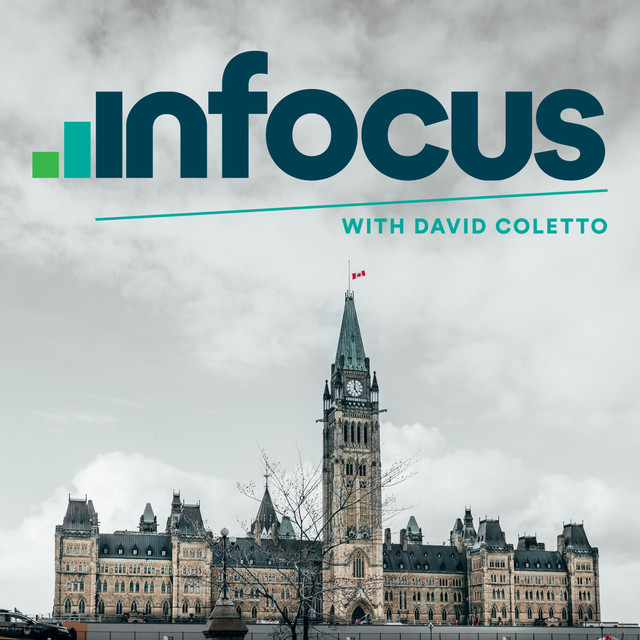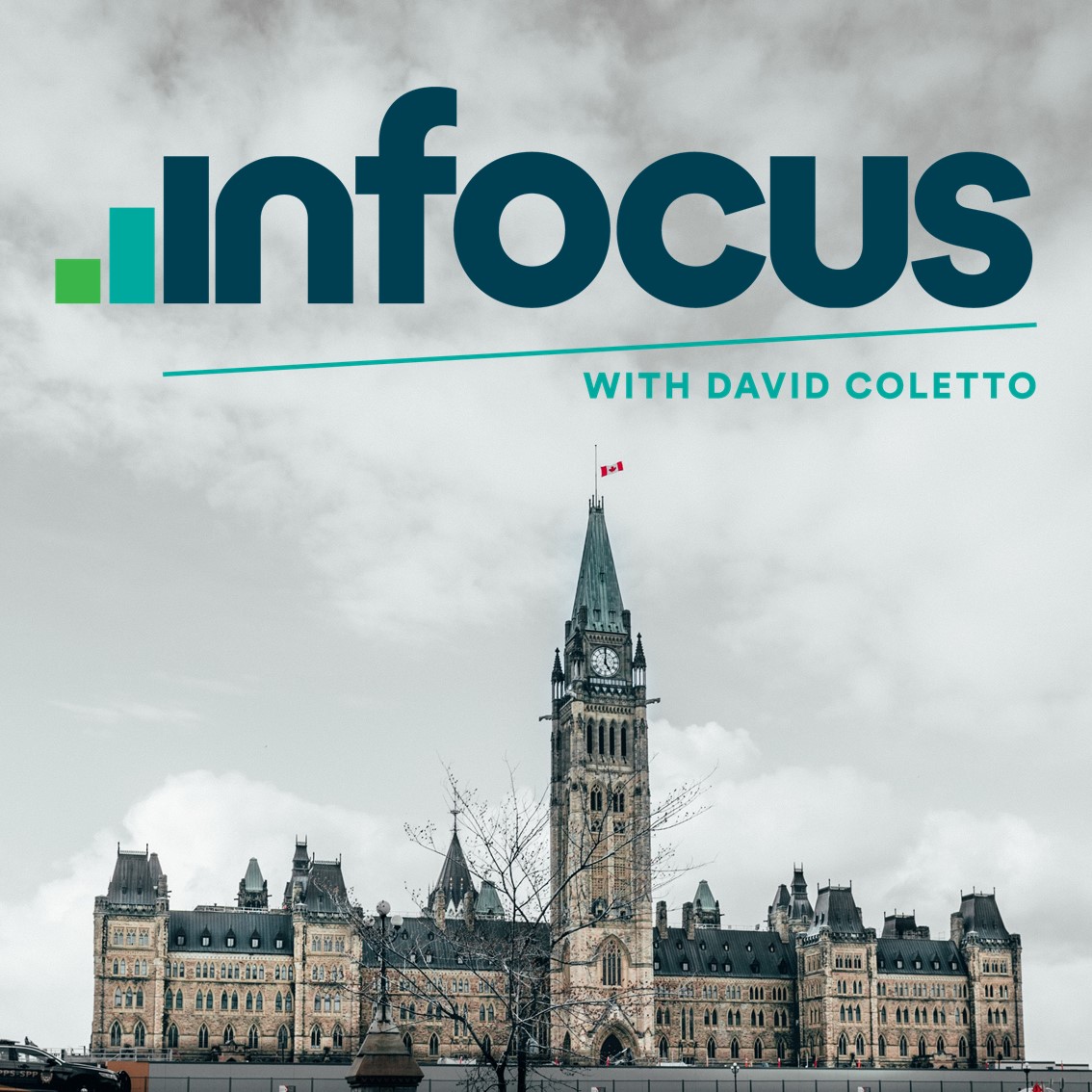[00:00:21] Well, it's been a whirlwind few days here in Ottawa. Mark Carney is now Prime Minister, having won the Liberal leadership, formed his government. But the big question on everyone's mind is when's the election call? Hello everyone, and welcome back to In Focus with David Coletto. I'm David Coletto. It's been a while since I've been on the pod, but it's great to be back. With the political landscape shifting so dramatically over the last number of weeks, I want to bring you up to speed on our latest survey results at abacus data, findings that shed light on how Canadians feel in this new era under Prime Minister Carney, maybe days before an official campaign begins. We conducted a survey with a representative sample of 1700 Canadians from March 10th to 12th, entirely done after he won the Liberal leadership last Sunday. Now, our polling shows that if an election were held right now, the Conservatives would be ahead by four points. We have the Conservatives at 38%, the Liberals at 34, the NDP at 15 and the Bloc at 7. Nationally, although the Conservatives still hold a four point lead over the governing Liberals, it's worth noting that that Liberal share has jumped significantly, up 5 points in two weeks, up a total of 14 points over two months. Meanwhile, the Conservatives are down 3, excuse me, since our last poll and 8 over the same two month period. Now the Conservatives continue to maintain an edge. In British Columbia and the Prairies, Ontario and Atlantic Canada, we are seeing an effective tie between the Liberals and the Conservatives. And in Quebec, the Liberals are now ahead of the block by seven points, 37 to 30, with the conservatives at around 20%. Now, when we group British Columbia, Ontario and Atlantic Canada together, the Conservatives come in at 40%, the Liberals at 36. And since mid January, Conservative support in these provinces has slipped 11 points while Liberal support has surged by 14.
[00:02:17] That is a major shift in areas that are traditionally decisive in elections and ones we're going to watch closely. Now, when we dig deeper and we look at who is moving, we see the Liberals have gained ground across every age Cohort. They're still five points behind the Conservatives among those under 30 and 11 points behind millennials, those aged 30 to 44. But they're essentially neck and neck with Canadians over 45 years of age. Among men, the Conservatives have an eight point advantage. Among women. It's a dead heat. One crucial factor when we look at those who how people voted in 2021 and how they say they're going to vote today, one of the big reasons why the Liberals are gaining so much momentum right now is because they are reassembling that 2021 voter coalition. As of now, 72% of those who voted liberal in 2021 say they'll do so again. That's up 12 points in a month. Among conservatives 2021 voters, loyalty is still strong at 82%, but it has declined slightly in recent weeks. For the New Democrats, they are only retaining 61%, less than two in three of their past supporters say they'd vote NDP again, with notable leakage of about 16% to the Liberals and nine percent to the Conservatives. With Mark Carney at the helm of the Liberal Party, it appears that many who have drifted from The Liberals since 2021 are coming back. Meanwhile, a small but significant portion of the Conservative base seems to be reconsidering its support.
[00:03:45] So let's talk about party leader images, which always matter. There's a strong correlation between how you feel about the main party leaders and how you're going to vote. For Mark Carney. We see he is in a NET favorable score, 37 positive, 30 negative. It is worth noting that his negatives are rising faster than his positives. For Pierre Poliev, we're seeing his negatives rise. He's at 36 positive. That's down five points, 43 negative, the highest we've ever recorded for a net score of -7. And Jagmeet Singh is basically holding static. 29 positive, 41 negative for a score of net 12 -12. Jagmeet Singh is the least popular leader in Canada right now. So Mark Carney's net impressions are in positive territory. His negatives are rising. And so there's still lots of Canadians, though, who don't have a good impression of the new Liberal leader and prime minister. And we'll see whether that changes. Now. There is a Trump effect. I think Donald Trump, as I've said in interviews and in analysis, is really looming large over Canadian politics and public opinion at the moment. As of our most recent survey, only 13% of Canadians hold a positive view of Donald Trump. That's down eight points in two months. A staggering 75% have a negative view among Conservatives. Really important, about one in four Conservative supporters have a positive view of Donald Trump. 60% are negative. And here's the big headline. 50% of Canadians now placed Donald Trump and his administration among their top three issues. That's an 11 point jump in just two weeks. It's almost a 20.5 point. So 25 point jump in literally a month.
[00:05:32] And it's closing in on the 61% who cite cost of living as one of their top three concerns. Now, when we ask we which party, among those people who say Donald Trump is their most important issue or one of their most important issues, which party is best able to handle that issue? The Liberals lead by 14 points among voters who rank Trump as a top issue. This is huge and I think a signal about the kind of ballot question that's emerging and dependent on that ballot question. Who's likely to gain. Now one of the other things and an important noteworthy development is that for the first time since November 2021, so just after the federal election in 2021, 50% of Canadians now say they'd consider voting Liberal. That is numerically ahead of the conservatives at 49%. It's the first time we've seen that happen. And so despite having an even split, we also highlighted an interesting group in our report. 16% of the electorate are open to voting for both parties. A group that could well decide the outcome of election whenever Prime Minister Carney calls it.
[00:06:40] Now, we also track who people think is going to win. 41% of Canadians still think the Conservatives are most likely to form the next government, but that's down 11 points in a month. The Conservatives are down over 20 points in the course of two months. On that perception, 32% believe the Liberals will win. That's up 12 points in that same month period. And only 6% think the NDP could pull it off. So while perceptions of a Conservative victory remain, the plurality view that gap is clearly shrinking. And as that election call nears, these who will win numbers I think can become self fulfilling prophecies or can be shattered by a strong campaign from either side we'll continue to see. Finally, we replicated a set of light hearted, unconventional, but I think revealing questions asking Canadians who who they think is best or they'd prefer in some real life scenarios. Mark Carney or Pierre Poliev resolving a dispute. Mark Carney leads. Pierre Poliev by nine. Standing up to a bully. Carney leads by four overall. But Poliev does better among some swing voters. Sitting. Who'd you like to sit beside? On a long flight, Carney wins over Poliev by six. What about putting up a shelf? Poliev leads, but many respondents were unsure about that. On perhaps what I think is the most important metaphorical crisis management scenario. Who would best captain a ship through a rough storm or put out a kitchen fire? Mark Carney has a narrow advantage overall, but they're nearly tied among those all important swing voters. Those open to voting Liberal or ndp. Interestingly, when it comes to personal finances, quote, helping manage your household expenses, Carney leads Poliev by three overall and is up by 17 points among that swing voter group. So if the Liberals in the past were seen as unable to manage expenses, manage the country's finances, Mark Carney might create an opportunity to change that. So what does all this mean? Well, as we wait for Mark Carney to drop the writ or to at least ask the Governor General to write them up, I think there's a few key takeaways from our survey. First of all, the race has tightened. There's no doubt. While the Conservatives maintain a modest lead in popular vote, the Liberal surge is real. Regions like Ontario, British Columbia and Atlantic Canada are now particularly competitive. Donald Trump is a wild card. Love him or hate him, most Canadians don't really like him. Donald Trump's presence is polarizing the country. The more Trump is in the spotlight, the more he talks about Canada being the 51st state, the more he starts and stops and starts and stops tariffs, the more the Liberals appear to benefit, especially given Carney's positioning as a calm, experienced leader during uncertain times.
[00:09:32] Now, we'll continue to track a bunch of these, but leadership impressions matter a lot. And Carney starts off his time as Liberal leader, as prime minister in positive territory. But how he handles these early days, his trips that he's planning to Europe later this week, could set the tone for the next campaign. Poliev, always important, retains a solid base, but must navigate some rising negatives and a changing ballot question. Ultimately, that ballot question, cost of living versus Trump, carbon tax versus Tariffs. The Conservatives hold an edge on cost of living and economic issues. When we ask people who care about them, which party do you think is best able to handle them? But if the election narrative continues to pivot towards Trump, foreign policy, crisis management, I think the Liberals in Mark Carney could have a distinct advantage. Now, it's always important to look at that 16% of the electorate open to voting for both the Liberals and the Conservatives, they remain crucial to understanding, I think, where this election is going. They'll likely decide the next government issues that resonate with them, like financial security, moderation. Strong leadership, I think will be front and center. A quick note on how we conducted the survey. It was an online poll of 1700 Canadian adults conducted between March 10th and 12th. Participants were randomly recruited from partner panels on the Lucid Exchange platform and a comparable margin of error for a probability based survey, plus or minus 2.4%, 19 times out of 20. This data was weighted by age, gender, region and education to match census benchmarks. And it was paid for by my company, Abacus Data. Well, that wraps up today's briefing. Keep an eye on In Focus with David Coletto. My
[email protected] you can get a whole bunch of analysis and data and insights that you're not going to find anywhere else. I'm David Coletto. Thanks for listening, and I'll talk to you soon.


